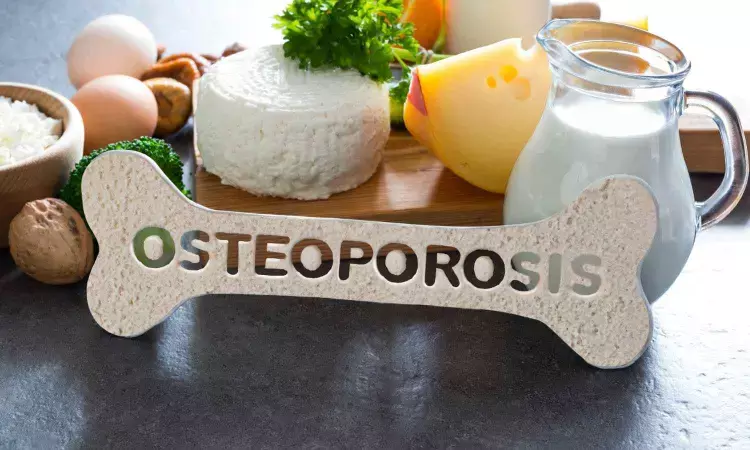- Home
- Medical news & Guidelines
- Anesthesiology
- Cardiology and CTVS
- Critical Care
- Dentistry
- Dermatology
- Diabetes and Endocrinology
- ENT
- Gastroenterology
- Medicine
- Nephrology
- Neurology
- Obstretics-Gynaecology
- Oncology
- Ophthalmology
- Orthopaedics
- Pediatrics-Neonatology
- Psychiatry
- Pulmonology
- Radiology
- Surgery
- Urology
- Laboratory Medicine
- Diet
- Nursing
- Paramedical
- Physiotherapy
- Health news
- Fact Check
- Bone Health Fact Check
- Brain Health Fact Check
- Cancer Related Fact Check
- Child Care Fact Check
- Dental and oral health fact check
- Diabetes and metabolic health fact check
- Diet and Nutrition Fact Check
- Eye and ENT Care Fact Check
- Fitness fact check
- Gut health fact check
- Heart health fact check
- Kidney health fact check
- Medical education fact check
- Men's health fact check
- Respiratory fact check
- Skin and hair care fact check
- Vaccine and Immunization fact check
- Women's health fact check
- AYUSH
- State News
- Andaman and Nicobar Islands
- Andhra Pradesh
- Arunachal Pradesh
- Assam
- Bihar
- Chandigarh
- Chattisgarh
- Dadra and Nagar Haveli
- Daman and Diu
- Delhi
- Goa
- Gujarat
- Haryana
- Himachal Pradesh
- Jammu & Kashmir
- Jharkhand
- Karnataka
- Kerala
- Ladakh
- Lakshadweep
- Madhya Pradesh
- Maharashtra
- Manipur
- Meghalaya
- Mizoram
- Nagaland
- Odisha
- Puducherry
- Punjab
- Rajasthan
- Sikkim
- Tamil Nadu
- Telangana
- Tripura
- Uttar Pradesh
- Uttrakhand
- West Bengal
- Medical Education
- Industry
GLP-1 receptor agonists could protect elderly diabetes patients from osteoporosis, reveals research

A recent retrospective study published in the Frontiers in Endocrinology suggests that glucagon-like peptide-1 receptor agonists (GLP-1 RAs) may significantly reduce the risk of osteoporosis in elderly diabetic patients.
Type 2 diabetes has long been recognized as a hidden contributor to bone weakening, often leading to higher fracture rates and poor outcomes. However, this new research uncovered promising data that GLP-1 RAs may offer protection against bone loss, which is an effect beyond their primary glucose-lowering benefit.
The study analyzed electronic medical records of 1,845 elderly T2DM patients treated at Tangdu Hospital from 2012 to 2023. The participants included had no history of osteoporosis at the start and were seen at least twice annually. Over the follow-up period, nearly 676 patients (36.6%) developed osteoporosis. However, among the 256 patients who received GLP-1 RA therapy, the rate of osteoporosis was significantly lower compared to those who did not receive these drugs.
Using Cox proportional hazards modeling, this study adjusted for a broad range of confounders including age, sex, body mass index (BMI), blood pressure, lipid profiles, kidney function, vitamin D and osteocalcin levels, HbA1c, statin and antihypertensive drug use, and smoking history.
The GLP-1 RA users had a 31% lower risk of developing osteoporosis when compared to non-users, with a hazard ratio of 0.69 (95% CI: 0.45–0.84, P < 0.05). This association remained robust across all subgroups examined, included both male and female patients, smokers and non-smokers, and those with varying body weights or blood pressure statuses, which indicated that the bone-protective effects of GLP-1 RAs were broadly applicable and not limited to specific patient profiles.
Overall, these findings could have meaningful implications for clinical decision-making. Further randomized controlled trials (RCTs) and large-scale observational studies will be required to validate these results and assess long-term outcomes.
The findings are considered a valuable contribution to growing evidence that GLP-1 RAs may support skeletal health. Notably, the drugs may influence bone metabolism through indirect pathways like weight loss, anti-inflammatory effects, or direct receptor activity on bone cells, the authors speculate.
Reference:
Chen, M., Lyu, Y., Zhao, J., Han, X., Huang, T., Yang, T., & Zhou, Y. (2025). Use of GLP-1 receptor agonist and risk of osteoporosis among patients with type 2 diabetes: a real-world study. Frontiers in Endocrinology, 16, 1586589. https://doi.org/10.3389/fendo.2025.1586589
Neuroscience Masters graduate
Jacinthlyn Sylvia, a Neuroscience Master's graduate from Chennai has worked extensively in deciphering the neurobiology of cognition and motor control in aging. She also has spread-out exposure to Neurosurgery from her Bachelor’s. She is currently involved in active Neuro-Oncology research. She is an upcoming neuroscientist with a fiery passion for writing. Her news cover at Medical Dialogues feature recent discoveries and updates from the healthcare and biomedical research fields. She can be reached at editorial@medicaldialogues.in
Dr Kamal Kant Kohli-MBBS, DTCD- a chest specialist with more than 30 years of practice and a flair for writing clinical articles, Dr Kamal Kant Kohli joined Medical Dialogues as a Chief Editor of Medical News. Besides writing articles, as an editor, he proofreads and verifies all the medical content published on Medical Dialogues including those coming from journals, studies,medical conferences,guidelines etc. Email: drkohli@medicaldialogues.in. Contact no. 011-43720751


